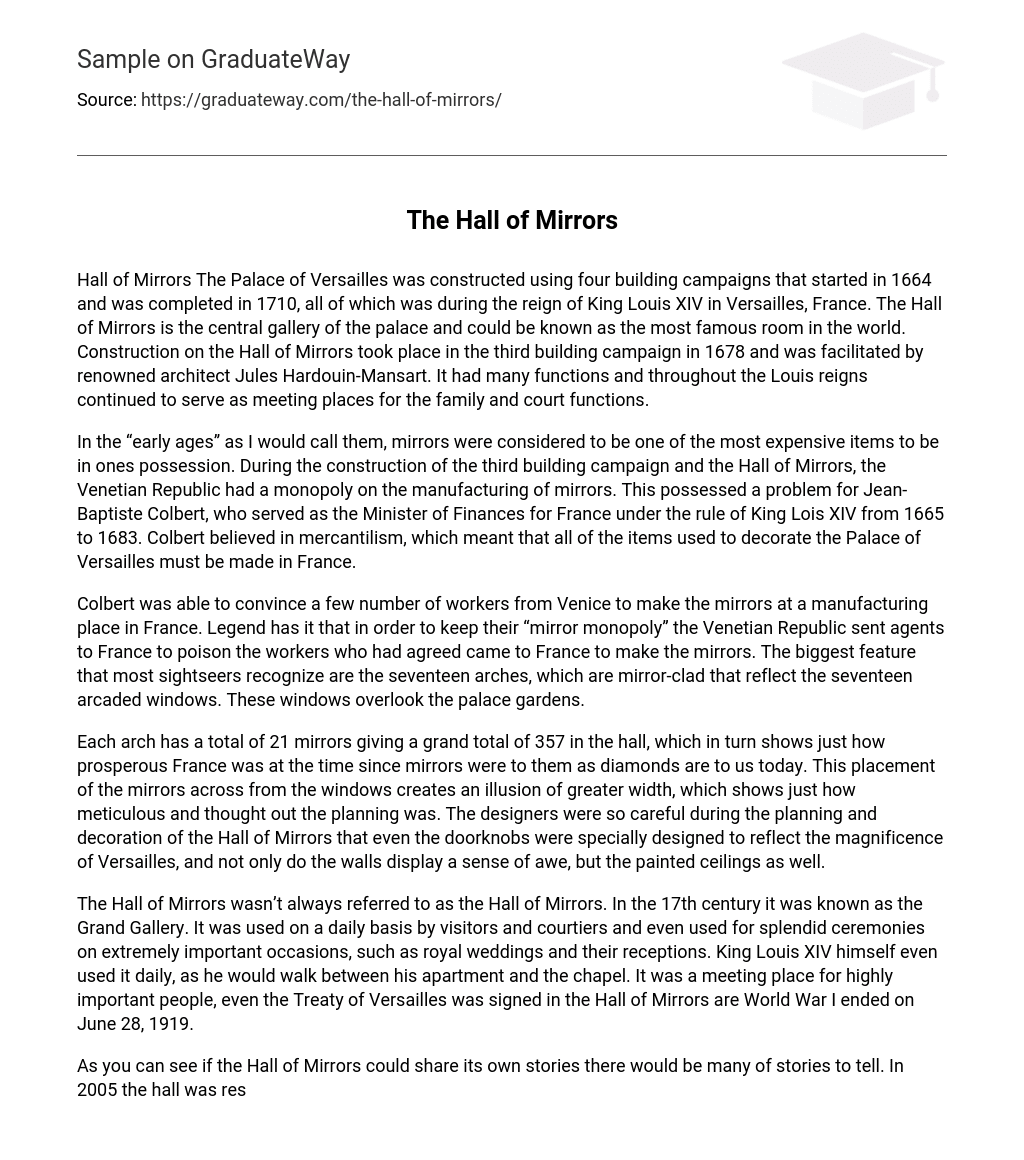The construction of the Palace of Versailles in Versailles, France took place from 1664 to 1710 under King Louis XIV’s rule. Architect Jules Hardouin-Mansart supervised the building of the Hall of Mirrors during the third phase in 1678. This famous room, known worldwide, had multiple functions such as hosting family gatherings and court events throughout the reigns of Louis XIV and his successors.
In earlier times, mirrors were considered costly and prized items. While constructing the Hall of Mirrors during the third building campaign, the Venetian Republic held a monopoly on mirror production. This presented a difficulty for Jean-Baptiste Colbert, who served as France’s Minister of Finances under King Louis XIV from 1665 to 1683. Colbert followed mercantilism principles that required all decorations for the Palace of Versailles to be made within France.
Colbert convinced a group of workers from Venice to make mirrors at a French factory. Legend has it that the Venetian Republic sent agents to France to get rid of these workers and protect their control over mirrors. The highlight that draws most tourists’ attention is the seventeen arches covered in mirrors, which reflect the seventeen arcaded windows providing views of the palace gardens.
The Hall of Mirrors in Versailles is a remarkable sight, with a total of 357 mirrors spread throughout. These mirrors were highly sought after as symbols of wealth and prosperity at the time, showcasing France’s affluence. By strategically placing these mirrors opposite the windows, an optical illusion is created that makes the hall seem wider than it really is. Even the doorknobs reflect the grandeur of Versailles, showing how meticulously designed and carefully planned everything was. Alongside the awe-inspiring walls, the painted ceilings further add to the overall splendor of this hall.
The Hall of Mirrors, also known as the Grand Gallery in the 17th century, served multiple purposes. It was a popular meeting spot for visitors and courtiers, and it hosted significant events like royal weddings and receptions. King Louis XIV frequently walked through this hall on his way from his apartment to the chapel. Additionally, important figures often gathered here, such as during the signing of the Treaty of Versailles on June 28, 1919, marking the end of World War I.
If the Hall of Mirrors could speak, it would have numerous stories to share. In 2005, a company committed to conserving French culture and recognizing the significance of the Palace of Versailles in French history and culture restored the hall. This restoration endeavor lasted approximately three years and had a price tag of around €12 million, which is equal to over $16 million USD. The Palace of Versailles continues to be one of the most extraordinary landmarks still standing today. Through diligent upkeep, future generations will have the opportunity to directly experience its magnificence rather than solely relying on textbooks.
Reference
- Page “Explore the EstateThe Palace. ” The Hall of Mirrors. N. p. , n. d. Web. 21 Oct. 2012. <http://en. chateauversailles. fr/discover-estate/the-palace/the-palace/the-hall-of-mirrors>. “Hall of Mirrors (Palace of Versailles).
- ” N. p. , n. d. Web. 19 Oct. 2012. <http://en. wikipedia. org/wiki/Hall_of_Mirrors_%28Palace_of_Versailles%29>.





